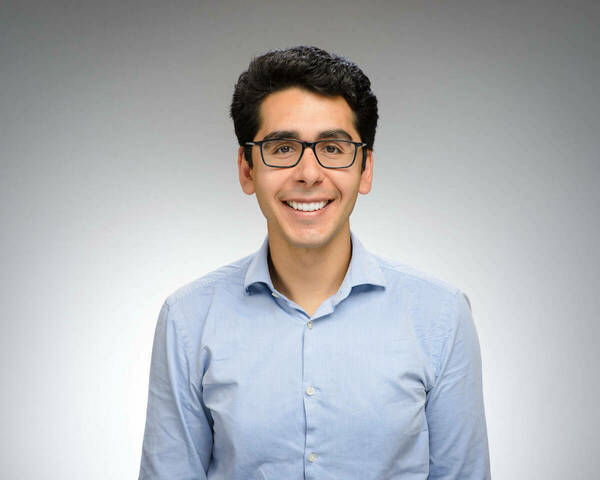A science of disruption
Published: April 25, 2023 / Author: Brett Beasley
A Notre Dame professor is working to identify and predict game-changing breakthroughs.
Diego Gómez-Zará, an assistant professor in the Department of Computer Science and Engineering at the University of Notre Dame, is highly attuned to one particular three-letter word: new.

August 12, 2022; Diego Gomez-Zara (Photo by Peter Ringenberg/University of Notre Dame)
Gómez-Zará, who also holds a concurrent appointment in Mendoza College of Business’ Information Technology, Analytics, and Operations department, explains, “We often speak of new findings, new products, and new trends without realizing we use that word in two very different ways.”
One use of the word has to do with incremental improvement—or as Gómez-Zará puts it, “adding more layers to what has been done in the past.” He calls this kind of newness “developmental” and acknowledges that most of the new products, ideas, and methods that each of us creates will be of this sort.
But there is another kind of “new”: the truly innovative idea that shifts paradigms, the groundbreaking product that revolutionizes the market, or the game-changing technology that alters the status quo. Borrowing Silicon Valley parlance, Gómez-Zará calls this kind of newness “disruptive.”
Gómez-Zará spends a lot of his time thinking about the difference between what is developmental and what is disruptive. But his interest goes far beyond semantics. The problem as he sees it is one of timing. Currently, we simply have to wait and see if an idea turns out to be disruptive.
He has developed data-driven tools for determining the factors that make a product, concept, and technology become disruptive rather than developmental. And now, with new funding, he is ready to develop tools to predict early on—even before launch or publication—whether a technology will be widely adopted or whether a new idea will catch on.
The funding comes from Amazon, a company with a well-known history of disruption. And for Gómez-Zará, this provides an important validation of his work. “It matters that Amazon thinks this idea is important and wants to support it. It is encouraging, and it speaks to the project’s potential,” Gómez-Zará says.
The award will also provide Gómez-Zará with $70,000 in funding, along with access to Amazon’s public datasets and machine learning tools and opportunities to consult with experts and participate in events and training sessions.
Gómez-Zará’s project will focus on predicting disruption by looking at the team behind it. His work builds on his past scholarship on the qualities of disruptive teams of scientists.
Gómez-Zará explains that scientific teams often publish developmental papers—ones that build on but do not fundamentally alter existing knowledge. But sometimes they publish papers that turn out to be disruptive. When a disrupted paper appears, it alters the research landscape. It tends to become the new authority that subsequent scholars cite.
Gómez-Zará is developing a machine learning model and a survey instrument that will comb through data on teams and the context in which they are working to determine whether a particular product will be disruptive or developmental. These determinations could help organizations assemble more innovative teams and also decide which ideas or products to spend time and money developing.
At the same time, there could be enormous implications for researchers and scholarship as well as for the institutions and agencies that fund them.
“There has been a lot of concern lately that science has become more developmental and less disruptive in the past few decades,” says Gómez-Zará. He references a recent analysis of 45 million papers and 3.9 million patents that found “papers and patents are increasingly less likely to break with the past in ways that push science and technology in new directions.”
Gómez-Zará says his new work could shed light on the causes of this innovation slowdown. “Right now there are so many hypotheses out there about why innovation is flagging, and they are all entangled.”
“If we could understand better what makes a particular innovation truly disruptive, then researchers can focus their attention and funders can focus their resources on the projects with the greatest potential to create lasting change.”
Originally posted on ND Research.
Related Stories




